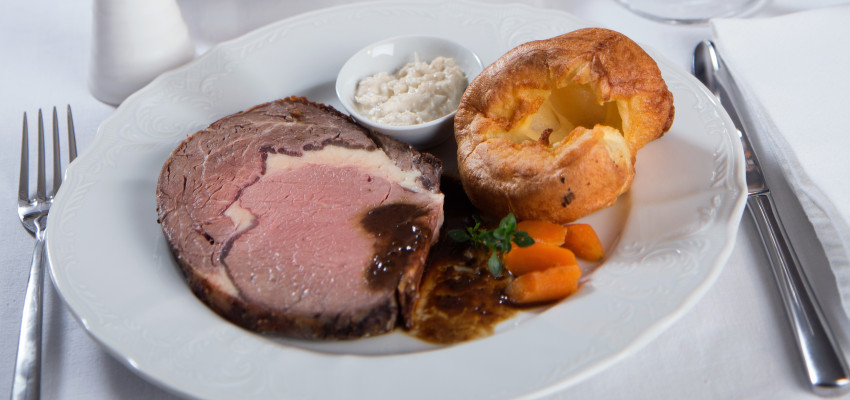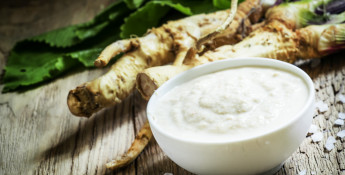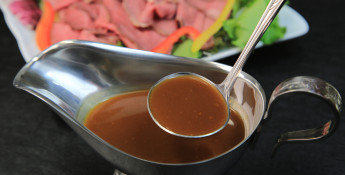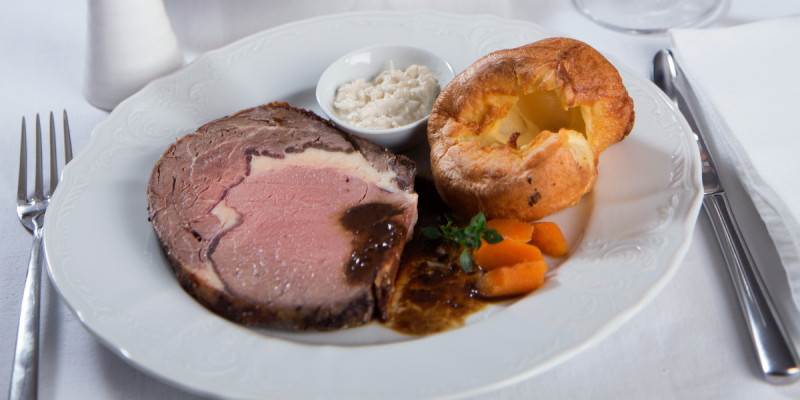By Chef Alli on November 5, 2019
How to make the perfect prime rib
Tips for making the most delicious prime rib

Have you ever wanted to learn how to make the perfect prime rib? Here's your opportunity.
Prime rib is synonymous with the holidays, no doubt about it. It’s rich, tender, full of flavor and has tons of magnificent presence that immediately elevates the meal. Some might even say it’s the best cut of beef on the entire cow. Because prime rib is usually saved for special occasions, you may not know much about how to prepare it, so here are some answers to common questions about prime rib so you can wow your guests this holiday season.
What cut of beef is prime rib?
Prime rib is a roast. Yep, you read that correctly. Prime rib comes from a ribeye roast, which can also be called a “rib roast,” a “standing rib roast,” an “eye of rib roast” or even a “prime rib roast.” But don’t let any of that deter you; a ribeye roast is the same superb cut of beef that prize ribeye steaks are sliced from.
What do I need to know before I purchase my prime rib roast?
Understand that the term “prime rib” has two definitions. It refers to both the Department of Agriculture (USDA) grade of beef, as well as the cut of beef. You can bet all major grocery stores will be selling prime rib roasts for the holidays, and most of the prime rib sold at the grocery store level is the grade of beef called “choice,” which is one grade below “prime.” That’s why I head straight to my favorite butcher shop when it’s time to purchase a prime rib roast.
How much prime rib should I purchase?
A general rule of thumb is to allow one pound per person, or one rib for every two people you’re serving at dinner. Purchasing this amount of prime rib will ensure there’s plenty for dinner as well as leftovers, too. As long as you know how many people are coming to dinner, your butcher will know how much prime rib you should purchase.
Bone-in or boneless prime rib?
Anytime you can roast meat with the bones intact, it’s a bonus, since the bones give the meat additional flavor. But the problem with a bone-in prime rib roast — especially if you’re a prime rib newbie —is that those bones can get in your way when it’s time to slice and serve. The answer? Tell your butcher you want a bone-in prime rib roast, but ask him to cut the rib bones off and tie them back on. Now you get to roast it with the bones, but can quickly cut the kitchen string holding them to the roast when you’re ready to slice and serve — just like magic!
Why should prime rib be served medium-rare?
For optimal flavor and texture, most people agree prime rib should be served medium-rare, which is an internal temperature of 130-135 F at the thickest part of the roast. To achieve the perfect temperature for a deliciously juicy prime rib, you’ll need to remove it from the grill or oven when it reaches an internal temperature of 120-125 F (rare), and let it rest, covered with foil, for 20-30 minutes before slicing.
What’s the biggest secret for scoring a perfectly cooked, deliciously juicy, medium-rare prime rib?
It’s so simple, you’re likely to think I’m telling tall tales: Be sure to give your prime rib roast plenty of time to come to room temperature before you begin any part of the cooking process. For every 3-4 pounds of prime rib roast, allow one hour out of refrigeration, uncovered. This helps your prime rib roast cook more evenly because the roast won't begin cooking with an ice-cold center.
How should I handle the guests who want their prime rib well done?
This is a common problem. Here’s how I handle it: Keep a large skillet of simmering beef broth handy on your stovetop. When you encounter the guest who needs their prime rib more done, slide their slice of beef into the simmering broth. It will cook quickly, and you can serve it to their plate within a few short seconds. Problem solved, guest satisfied!
What tools will I need to prepare and cook prime rib?
Here are the essentials: a reliable instant-read meat thermometer, a large, sturdy roasting pan, a roasting rack, tongs, a sharp carving knife and a cutting board with an outer channel for the juices to gather in. If a roasting rack isn’t available, you can place carrots and celery ribs side-by-side across the bottom of your roasting pan to create a roasting rack made of aromatics.





